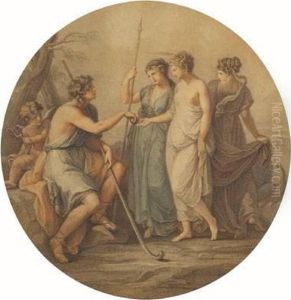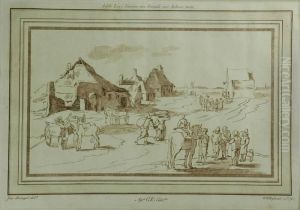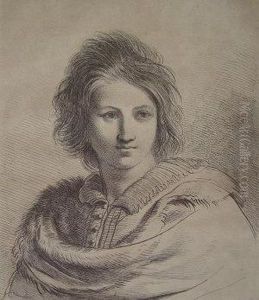William Wynne Ryland Paintings
William Wynne Ryland was an English engraver, best known for his works in the chalcographic and stipple engraving techniques. Born in London on July 5, 1732, he was the son of Edward Ryland, an engraver and fan-maker. William displayed an early talent for art, which led his father to apprentice him to the renowned French engraver François Boucher. Under Boucher's tutelage in Paris, Ryland developed his skills and became a proficient artist in his own right.
After his return to England, Ryland quickly established himself as a leading figure in the art world. He was appointed engraver to King George III, which significantly raised his profile and led to numerous high-profile commissions. His style was characterized by a delicate and detailed approach which was particularly suited to reproductions of paintings and the creation of decorative prints. Ryland's works often featured classical and mythological subjects, as well as contemporary scenes and figures.
Despite his artistic talents and initial success, Ryland's life took a tragic turn. He became entangled in financial difficulties, partly due to living beyond his means and possibly because of unwise investments. In a desperate bid to resolve his debts, he was implicated in a forgery scheme involving bank notes. Ryland was arrested, tried, and found guilty of the capital crime of forgery. In a dramatic and ignominious end to his career and life, he was executed by hanging at Tyburn on August 29, 1783. His death was a sensational event of the time and served as a stark warning against the perils of forgery. Despite the scandalous end to his life, Ryland's artistic contributions, particularly his engravings, continue to be recognized for their technical skill and aesthetic beauty.


